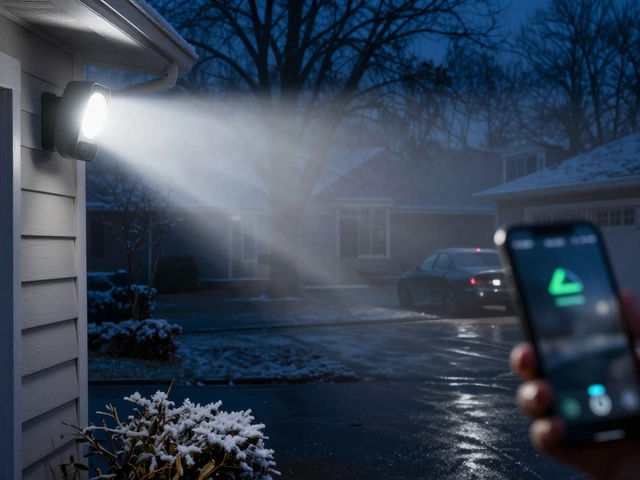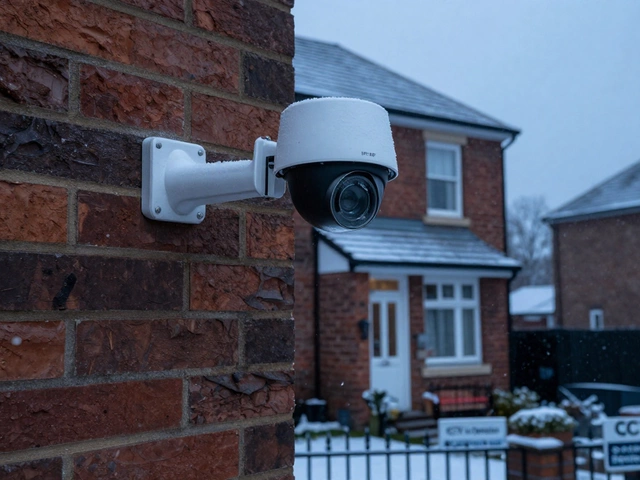Shopping for a baby monitor and feeling lost in a maze of tech terms? You aren’t alone—everyone wants the safest, most convenient way to keep an eye (and ear) on their baby, but it’s easy to get tripped up by the question: do you actually need WiFi for a baby monitor?
Here’s the quick version—no, you don’t need WiFi for a baby monitor, but certain features you might want will depend on it. WiFi monitors can send live video and audio to your phone, wherever you are—even at work or out for date night. Non-WiFi monitors stick to a traditional closed system (think walkie-talkie with a camera), which works perfectly for many families who just want to check in from another room.
If your internet drops out or your WiFi is spotty, a non-WiFi monitor actually works better. I’ve seen this play out at my own house. Last winter, the internet glitched for an hour—my old-school monitor kept rolling, while a neighbor called me panicked because hers just went blank. So the answer’s not that you “need” WiFi, but more about your lifestyle—and how much you trust your home network.
- WiFi vs Non-WiFi Baby Monitors
- Real-World Pros and Cons
- Privacy and Security Concerns
- Making the Right Call for Your Family
WiFi vs Non-WiFi Baby Monitors
If you're stuck choosing between a WiFi and a non-WiFi baby monitor, it helps to lay out what each actually does and who they're really for. At the end of the day, both options watch over your little one, but how they get info to you is where things split.
Baby monitor options break down like this:
- WiFi baby monitors: These connect to your home internet and use an app so you can check the video and audio feed from your smartphone. You can peek in from the backyard or even while you're at the office. Some even support multiple users—handy if you want the grandparents to have access.
- Non-WiFi baby monitors: These work more like walkie-talkies or a wireless video system. The camera sends video straight to a parent unit, so you don’t need internet at all. Set it up, turn it on, and you’re monitoring—no extra logins or fuss.
This table shows what you typically get with each type:
| Feature | WiFi | Non-WiFi |
|---|---|---|
| View on phone anywhere | Yes | No |
| Set up without internet | No | Yes |
| Prone to hacking risks | Yes | No (very rare) |
| Price range | $60–$300 | $40–$200 |
| Lag/delay | Sometimes | Rarely |
| Multi-cam support | Usually easy | Sometimes limited |
WiFi models are ideal if you’re a parent who travels a lot or works long hours away from home. You’ll love checking in on your baby from anywhere—just need stable internet and a good app. One catch, though: if your WiFi cuts out, so does your feed.
Non-WiFi versions are still super popular. No apps to mess with, no passwords to forget, and your signal usually won’t cut out unless you’re too far from the camera. If your WiFi is unreliable, or you get nervous about digital snoops, these are a solid choice.
Ultimately, think about your daily routine, tech comfort level, and whether you really need those remote features or just want peace of mind when you’re in the next room.
Real-World Pros and Cons
Let’s get into what really matters before you pick a baby monitor. There are some legit upsides and downsides here, and it’s not always obvious from the box what you’re actually getting.
WiFi baby monitors score big on remote access. You can stream video to your phone anywhere with good Internet. Perfect if you want to check in during a late work shift or you get separation anxiety while running errands. Some even support multiple viewers, so your partner or grandparents can check in, too. But the biggest downside? They rely on your WiFi and the cloud. If your internet’s spotty or goes out, you might get left hanging.
Non-WiFi monitors keep things simple. They use their own signal—usually FHSS (Frequency Hopping Spread Spectrum). This means a more secure, private connection and way less messing around with settings. Setup is basically plug and play. But you’re limited by range. Most only cover your house and maybe the yard. You can’t peek in from the gym, and some won’t let you record or save video.
- WiFi Monitors: Remote access, cloud video, tap-to-talk features, usually longer ranges—but need reliable Internet and watch your data privacy settings.
- Non-WiFi Monitors: Simple setup, consistent signal, no hacking risk, but limited to monitor-parent unit range, usually 700-1,000 feet max.
Want some real-world data? Here’s how WiFi and non-WiFi monitors stack up:
| Feature | WiFi Monitor | Non-WiFi Monitor |
|---|---|---|
| Remote Viewing | Yes (anywhere) | No (local only) |
| Signal Range | Up to unlimited (online) | Typically 700-1,000 ft |
| Setup | Requires app & WiFi settings | Plug and play |
| Connection Security | Dependent on baby monitor app & network | Secure/Private (less hackable) |
| Video Recording | Usually cloud or local storage | Rare, unless monitor has SD card |
| Cost | $$ - $$$ | $ - $$ |
One more tip? If you live in an apartment with heavy WiFi traffic, interference can mess with a WiFi monitor. But if you live in a big house with thick walls, even non-WiFi signals might drop in the basement or backyard. Before you buy, think about your home layout and the coverage you need.

Privacy and Security Concerns
No one wants their baby’s room turning up on some stranger’s screen. With a baby monitor, privacy matters a lot—especially if you’re thinking about a WiFi model.
WiFi monitors connect through your home network and, in some cases, the cloud. That means if your password’s weak or the device isn’t updated, someone with the right skills could potentially hack in. There were more than 1.5 million attempted breaches of smart home devices in the US in 2023—that’s not just video doorbells and thermostats, but baby monitors too.
Here’s what’s at risk with WiFi monitors:
- Unauthorized access—hackers watching or listening in, which has really happened before.
- Potential data leaks—personal info like video feeds, user names, and even home addresses can be compromised if you’re not careful.
- Cloud storage risks—if your monitor saves footage remotely, leaks can happen if the server isn’t secure.
On the flip side, non-WiFi models use local signals, like radio frequency or DECT technology. This means they’re pretty much impossible to hack unless someone’s physically close with spy gear. They don’t send data through the internet, so your risk drops to almost zero.
If you decide to buy a WiFi-enabled monitor, keep these tips in mind:
- Always set a unique, complicated password for both your device and your WiFi network.
- Update firmware regularly—manufacturers patch bugs and security holes all the time.
- Turn on two-factor authentication if the app allows it.
- Cover or turn off the camera when you don’t need it, just for extra peace of mind.
Check out this table for a quick compare on security between WiFi and non-WiFi monitors:
| Feature | WiFi Baby Monitor | Non-WiFi Baby Monitor |
|---|---|---|
| Remote Access | Yes (worldwide) | No (local only) |
| Hacking Risk | Higher unless secured | Very low |
| Data Stored Online | Maybe (if cloud-based) | No |
| Security Updates Needed | Yes | No |
Choosing the right type often comes down to weighing convenience against privacy. There’s no one-size-fits-all answer, just what makes you sleep better at night.
Making the Right Call for Your Family
Picking a baby monitor feels like one more decision where everyone’s got advice, but your choice actually comes down to how you live and what keeps you sane. Some families can't imagine life unless they can peek in on their baby from the grocery store, while others just want to know their kid is quiet through the night. There’s no one-size-fits-all answer.
If peace of mind tops your list and you’re itching to keep things simple, a non-WiFi monitor is super reliable. These work even if your internet goes out, which honestly happens way more than anyone admits. Plus, fewer tech steps mean the only thing you need to worry about is finding an outlet.
But maybe you love gadgets or travel a lot—maybe you like checking in on your baby from work just to see that little sleepy face. In that case, going WiFi can be a game changer. Apps let you share the video feed with trusted family. Some WiFi monitors even have breathing or movement sensors, though the medical community usually recommends these features as “nice to have,” not must-haves.
- If your WiFi is slow or drops a lot, stick to non-WiFi.
- For city apartments with strong, consistent internet, a WiFi monitor might fit your life perfectly.
- If privacy creeps you out, know that non-WiFi monitors aren't hackable from the outside (just don't go sharing the parent unit around like a TV remote).
If you’re still torn, take a closer look at what features matter most to your family. Make a list. Do you need two-way talking? Video recording? Night vision? Or does the old-school audio-only monitor do the trick?
| Feature | WiFi Monitor | Non-WiFi Monitor |
|---|---|---|
| Remote Access | Yes (anywhere with internet) | No (limited to local range) |
| Ease of Use | May require app setup & firmware updates | Usually plug-and-play |
| Privacy Risk | Vulnerable to hacks if not secured | Virtually none |
| Function When Internet Drops | No | Yes |
And don’t forget cost. WiFi models usually cost more, but you’re also often paying for more features—and sometimes for things you might not even use.
Don’t get sucked in by flashy extras. At its core, a baby monitor is just your eyes and ears in the next room—pick what feels right for you, not your neighbor or the store clerk.






